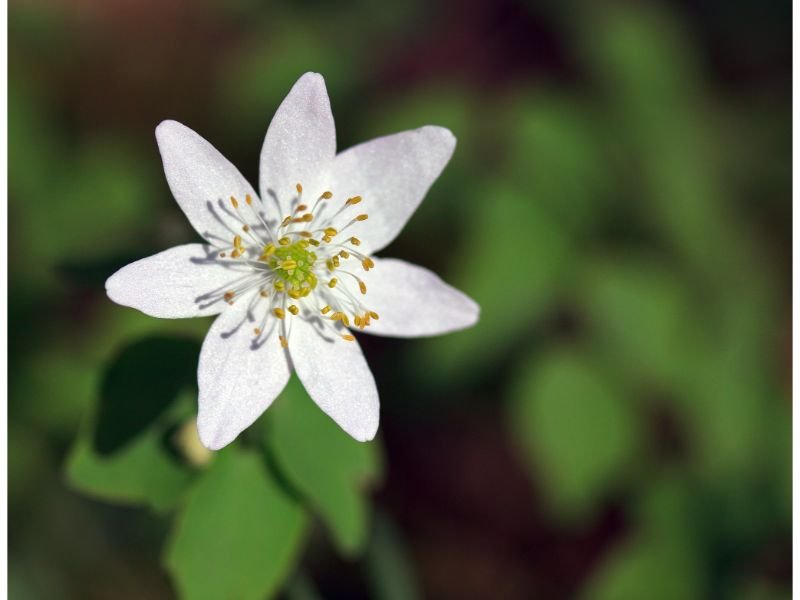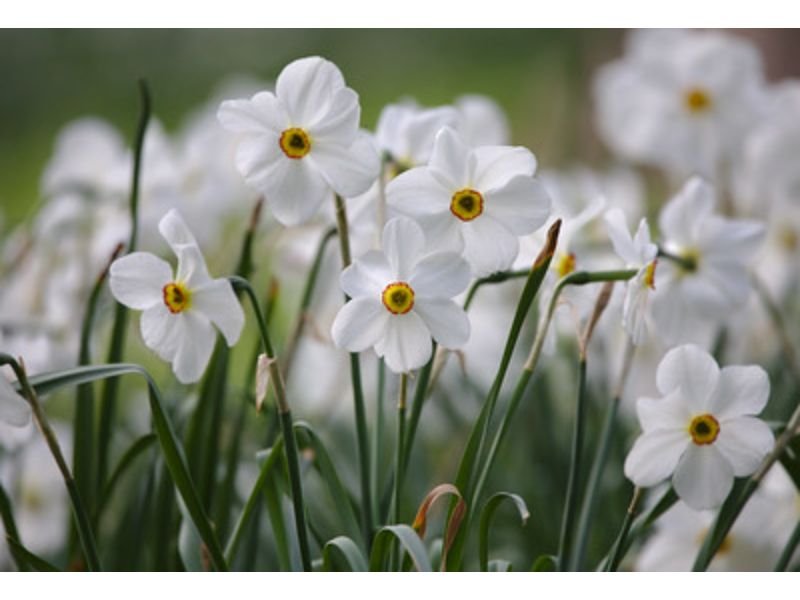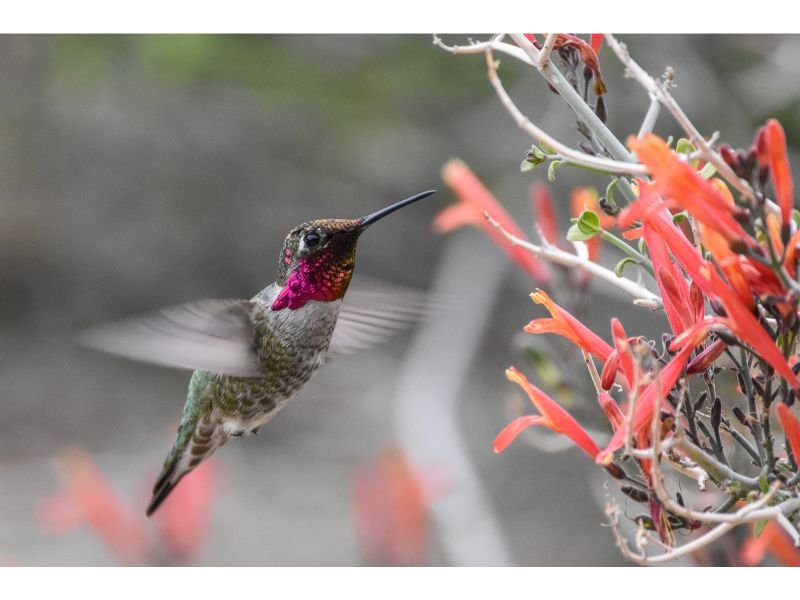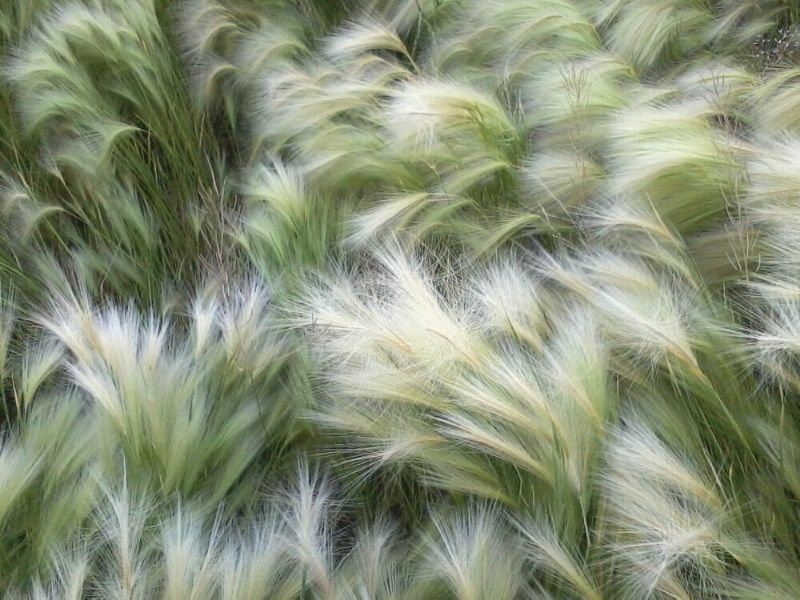Whether you’re a fan of delicate wildflowers or not, the charming blooms of rue anemone are sure to catch your eye. This flowering plant can be surprisingly hardy and easy to maintain, however, you’ll still need to pay extra attention to their growing requirements. So, if you’re ready to dive into the world of rue anemone, let’s get started!

Table of Contents
Rue Anemone Flower Botanical Info
Common Name(s): Windflower, anemonella thalictroides, thalictroides anemone
Scientific Name: Thalictrum thalictroides
Family: Ranunculaceae
Life Cycle: Herbaceous perennial
Country of Origin: Eastern North America
Natural Habitat: Meadows, woodlands, streambanks
Size: Approximately 5 to 10 inches (12 to 25 inches) tall and spread to about 12 inches (30 centimeters)
Toxicity Level: Mildly toxic if large quantities are eaten
Color(s): Milky white, pale pink, greenish-yellow
What Are Some Interesting Facts About Rue Anemone?
Rue anemone, previously known as Anemonella thalictroides, is more than just physical beauty. Thanks to their pollen, this plant is a favorite snack for early spring pollinators such as bees and butterflies. Due to their unique way of reproducing, rue anemones can also be propagated by seeds, division, or root cuttings–providing a broad choice for gardeners to pick one method they’re most comfortable with!
Foliage and Blooms Appearance
When it comes to appearance, it’s not difficult to see why rue anemone became one of the most favored flowering plants in the gardening world. Rue anemone features small and delicate white or pale pink blooms with usually 6 to 9 petals on each and a greenish-yellow or yellow center made from a group of pistils or stamens. Unlike anemone pulsatilla, the foliage is light to medium green, rounded, and three-parted lobed.
Rue Anemone vs Wood Anemone: What’s The Difference?
For most people, trying to tell the difference between a rue anemone and a wood anemone is like trying to tell the difference between identical twins. Although they share a similar appearance and both come from the Ranunculaceae family, these two are not the same species.
The easiest way to tear them apart is by looking at the foliage. Thalictrum thalictroides have roundish, lobed foliage that is parted into three divisions, while wood anemone produces lobed leaflets that are elongated in shape. Wood anemone generally has more elliptical blooms with fewer petals, while rue anemone features roundish blooms with more petals.
Size and Growth
Anemonella thalictroides stays compact and typically grows to only about 10 inches (25 inches). They’re considered as slow to medium-growing flowering plants and will take several months to reach their mature size.
Does Anemonella Thalictroides Fragrance-Free?

In contrast to wood anemone, which is reported to have musky leaves, rue anemone does not produce any strong fragrance. The focus of rue anemones is primarily on their delicate white flowers and not on their scent.
Is Rue Anemone Poisonous?
Thalictrum thalictroides is considered mildly toxic, as all parts of the flowering plant contain protoanemonin, a toxin that can cause skin irritation, burning sensation, nausea, and vomiting. It’s a wise idea to keep them away from children and pets that may be more susceptible to accidental ingestion.
What Can You Do With Rue Anemone?
Despite the toxicity, rue anemone is used by Native Americans to treat vomiting and diarrhea, even though further research on the effectiveness is limited. Rue anemone is highly priced for their ornamental purposes, their compact size and showy blooms are making them a perfect addition to rock gardens and as ground cover. To add, this stunning flowering plant also provides an important choice of pollen for bees, butterflies, and any other wildlife.
What Do Thalictrum Thalictroides Tolerants Of?
Rue anemone is somewhat tolerant to drought and dry soil, although prolonged exposure to these hard conditions can do more harm than good. The plant is also tolerant to shade and can thrive in areas with dappled or partial shade, however, they may not produce many flowers in these growing environments.
Growing Rue Anemone: Everything You Need To Know

Light
Thalictrum thalictroides is a ‘shy’ plant that prefers being in partial to full shady areas. It’s highly recommended to keep them away from direct sun as it can cause the foliage to wilt and scorch. Although it can be quite challenging, they can be grown indoors, however, you may need to supplement their growth by using artificial grow lights.
Watering
As a moisture-loving plant, rue anemone loves well-draining and consistently moist soil to produce the best blooms. During the plant’s active growing season, which falls during spring to early summer, you may need to water more frequently but keep in mind to not overwater the plant as it can cause root rot and stress.
Temperature and Humidity
Anemonella thalictroides cover a wide range of temperatures, as they can grow in zones 4 through 8. Depending on your climate, the suitable temperature for rue anemone should be between -20°F (-28°C) to 50°F (10°C). This plant is not sensitive to humidity, however, moderate humidity levels would likely do the justice. As a general rule of thumb, just provide the plant with enough moisture, and you don’t need to worry about adjusting the humidity level.
Soil
The soil requirements for rue anemone are fairly easy. This flowering plant prefers humus-rich, moist, slightly acidic to neutral, and well-draining soil. Any type of soil, whether it’s sandy, loamy, or clay, will do just fine as long as they meet the basic criteria. If you live in a drier area, adding a layer of mulch can help retain moisture and control weed growth.
Fertilizing
Thanks to their adaptability to thrive in poor soil conditions, Anemonella thalictroides generally do not need many fertilizers, especially if their soil is already rich in high organic matter or compost. However, if you still want to fertilize the plant and boost its growth, it’s best to use a slow-release fertilizer in early spring and avoid over-fertilizing at all costs. Avoid using fertilizer that is rich in nitrogen, as it can cause the plant to produce more leaves and fewer blooms, and also lead to leaf burns.
Pruning and Repotting
Your precious rue anemone needs repotting and pruning for various reasons. Pruning can be done after the plant has finished blooming, by simply cutting back any dead and damaged leaves, stems, and flowers. This process can help keep the plant looking neat and also promotes new growth. Although rue anemone is somewhat sensitive to root disturbance, they still take advantage of repotting, especially if the plant has outgrown its growing space and any pests or diseases occur. Repot the plant when they’re not actively growing and pick a new container that is one or two sizes bigger than the old one.
Propagation
Thalictrum thalictroides can be propagated through division, which is also the easiest and the most common propagation method. We recommend doing this propagation method during early spring when the plant is just starting to thrive. First, you need to dig up the plant and separate the root into several sections, with each section having to have healthy roots or nodes attached. Plant each division in well-draining, fertile, and moist soil, water thoroughly, and you’re done!
Common Thalictrum Thalictroides Pests and Diseases and How To Fix Them
The good news for all plant lovers, Rue anemone is typically not disturbed by pests and diseases, however, like any plant, they still can be affected by a few common issues. Powdery mildew, which appears as a white coating on the leaves, is one of these issues. To prevent this, make sure to avoid high humidity and poor air circulation.
Another potential problem is coming from snails, which can damage the foliage and flowers, and can be prevented by using pest control. Keep in mind that almost any kind of pest and disease can be treated by simply providing the preferred growing conditions.
Wind Up: Do We Recommend Growing Rue Anemone?
To ring down the curtain, yes, we do recommend growing the delicate rue anemone a.k.a thalictrum thalictroides. They’re more than a gardener could wish for: with a showy and attractive appearance, growing requirements that are not difficult to replicate, and most importantly, they don’t need much fertilizers, pruning, and repotting, which can save you a lot of bucks! Moreover, rue anemone is the ‘all-you-can-eat’ plant for most pollinators, providing them with not only food but also a tiny environment to grow.

New author in the hood. Loves gardening and flowers are my spirit animals (yes I know they are not animals but I insist). I will be covering most of the flowers’ topics here and occasionally random though as well.






